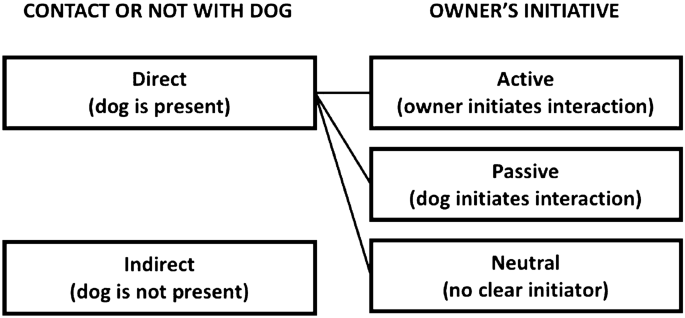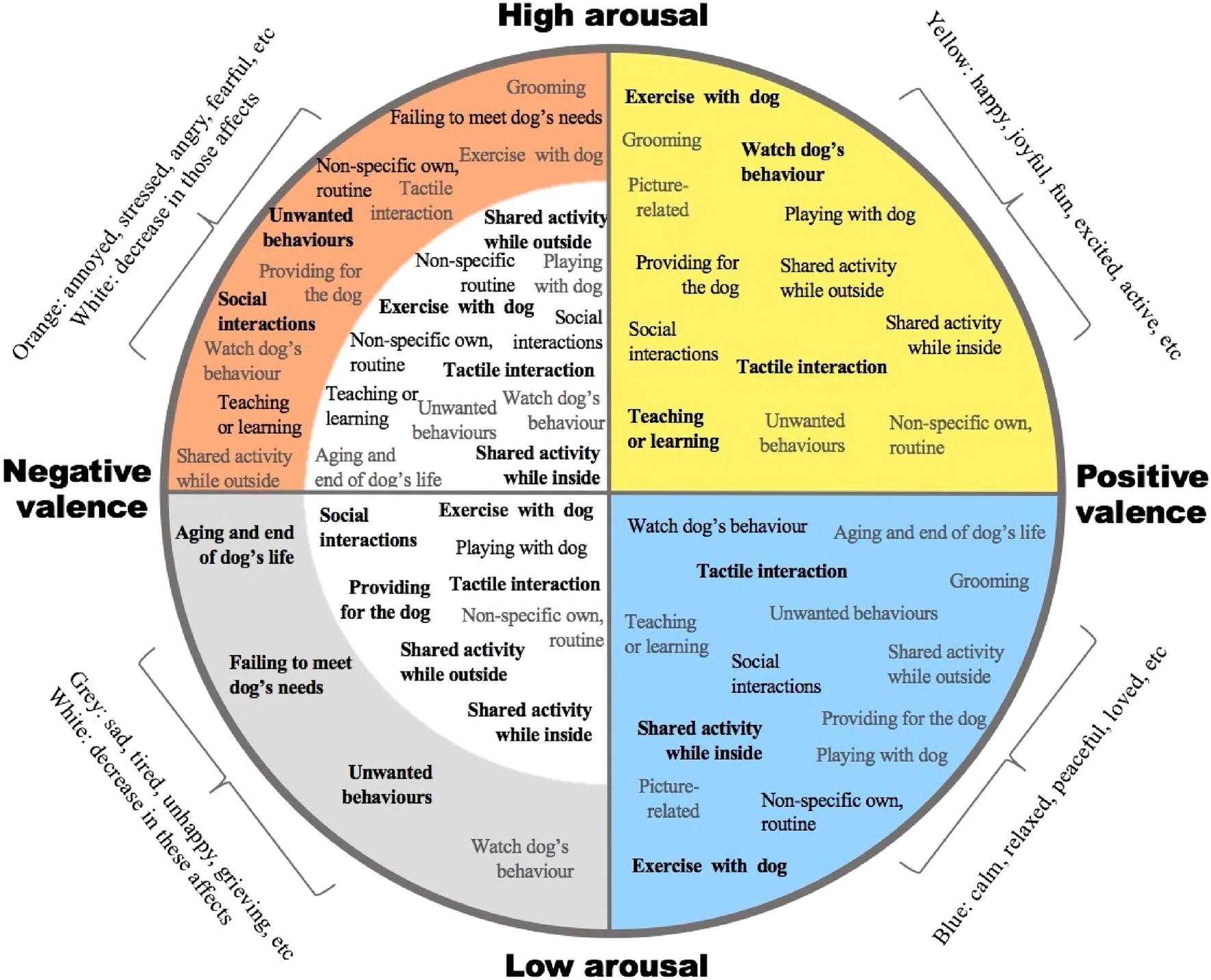
A framework for understanding how activities associated with dog ownership relate to human well-being - Scientific Reports
There is notorious inconsistency regarding mental health benefits of dog ownership, partially due to repeated cross-sectional studies comparing dog owners and non-owners, without taking into account the heterogeneity of dog-owner dyads, especially the activities with which the owners are...
There is notorious inconsistency regarding mental health benefits of dog ownership, partially due to repeated cross-sectional studies comparing dog owners and non-owners, without taking into account the heterogeneity of dog-owner dyads, especially the activities with which the owners are involved. This study aimed to develop a comprehensive framework of the most important dog human related activities and their impact on owner well-being. Six focus groups with 35 dog owners were conducted, and their audio transcripts thematically analysed. Dog human related activities and themes of activities were linked to their reported changes in well-being through matrix coding.
A framework of 58 dog human related activities linked with their specific hedonic well-being, life satisfaction and eudaimonic well-being outcomes was generated. Most activities were reported to improve owner’s well-being, (e.g. human–dog tactile interaction increases owner’s self-esteem), and a minority was mainly associated with negative outcomes. The richness of the framework presented in this study reinforces the importance of assessing dog ownership well-being outcomes based on specific dog human related activities with which dog owners are involved. This new and systematic investigative approach should decrease inconsistencies in the field and facilitate mental health interventions and study designs of a higher level of evidence...

The recurrent inconsistencies observed across studies investigating dog ownership and human well-being, without taking into consideration the individuality of each dog–human relationship, drove the use of a new investigative approach in this study...
As might be expected, the majority of dog human related activities were associated with positive well-being outcomes but three important groups of activities had a predominantly negative impact on owners’ well-being: (1) aging and end of dog’s life, such as euthanasia, (2) failure to meet dog’s needs/expectations, such as leaving the dog alone at home, and (3) unwanted behaviours, such as problematic tendencies and poor obedience...
It is not surprising that the most frequently reported activities to impact on well-being in this study, have also been reported to be important in previous investigations. Physical interactions with dogs, for example, have been shown to decrease stress38,39,40,41, anxiety42,43,44 and fear45, and increase feelings of positive valence15. Being greeted by the dog is suggested to provide comfort and positive feelings for owners46. Dog walking often catalyses owners’ social interactions15,47, improves owner’s emotional state24 and gives them purpose in life15. In contrast, unwanted behaviours may hinder owners’ social interactions46 and generate feelings of negative valence48. The loss of a pet46 and the care of an old animal49 have also been linked to negative feelings of low arousal, such as sadness and depression, as has a sense of failure to fulfil the dog’s expectations, e.g. when owners fail to walk them26 or leave them alone at home. However, our study extends this list and systematically integrates this more comprehensive inventory of activities into a coherent framework for the first time (Figs. 2, 3 and 4).
Changes in affect (hedonia) were mainly reported to be caused by specific events, such as playing, training, being greeted by the dog, while changes in eudaimonic well-being (eudaimonia) were mainly linked to more general events, such as being a dog owner and looking after the dog. This difference is not surprising since hedonia (represented by affect) amounts to the pursuit of pleasure through the experience of discrete life events, responsible for changes in feelings32,50; by contrast, eudaimonia, represents a lifestyle, (“eudaimonic living”)51, in which intrinsic values and long-enduring outputs are aimed for36, making eudaimonia more stable over time than hedonic well-being33,52. Thus, it seems likely that either a set of activities or a high intensity/frequency/duration of activities is required to yield transformations in eudaimonia, rather than the experience of a single event. For example, walking a dog once a year may suffice to increase one’s momentary happiness and be identified as an activity that improves this affect. However, this same event may not be enough to change the meaning or quality of one’s life (aspects of eudaimonia).
Changes in life satisfaction, one of the components of subjective well-being, was not linked to dog human related activities by the majority of participants. This might be a product of the study design...
